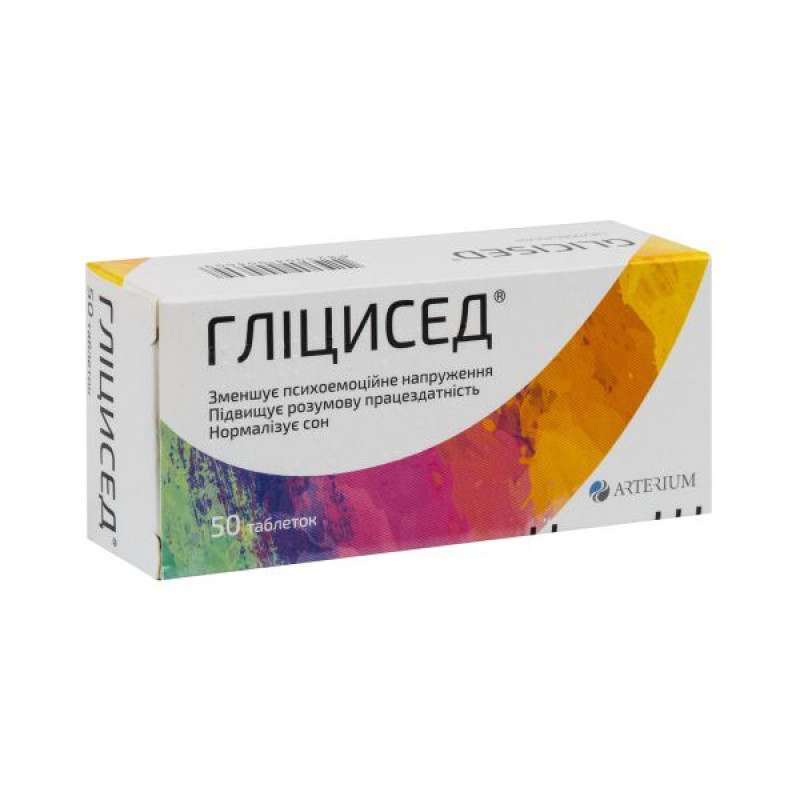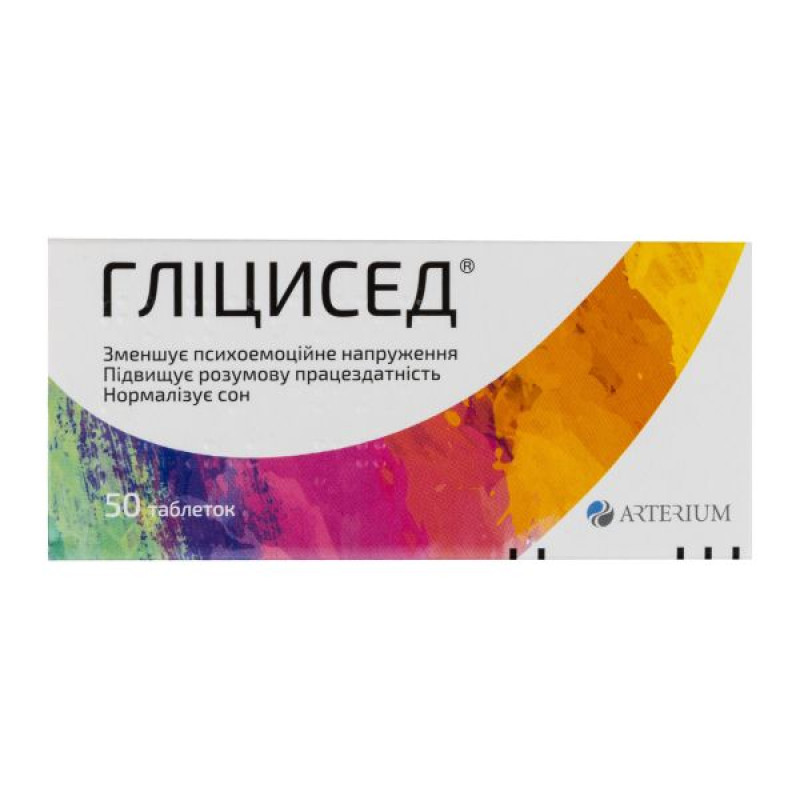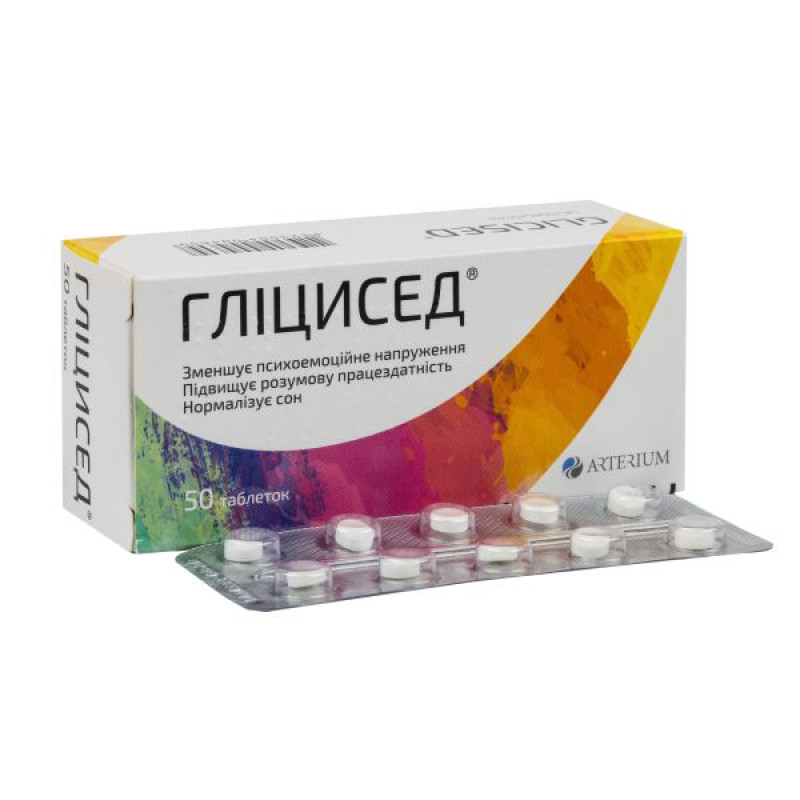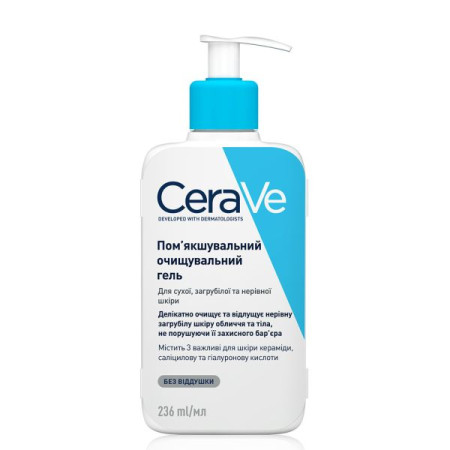Glycised tablets 100 mg No. 50

Instructions for use Glicised tablets 100 mg No. 50
Composition
active ingredient: glycine;
1 tablet contains glycine in terms of 100% substance 100 mg; excipients: ammonium methacrylate copolymer dispersion, montan glycol wax, povidone, calcium stearate.
Dosage form
Pills.
Main physicochemical properties: tablets of almost white or white with a creamy tint, round in shape with a flat surface with a bevel. The surface of the tablets may be marbled.
Pharmacotherapeutic group
Drugs that affect the nervous system.
ATX code N07X X.
Pharmacological properties
Glycine is a non-essential amino acid (natural metabolite), is a neurotransmitter of inhibitory action and a regulator of metabolic processes in the central nervous system, reduces psycho-emotional stress, increases mental performance, exhibits neuroprotective, anti-stress, sedative effects, improves brain metabolism, normalizes sleep, reduces the toxic effects of alcohol. It is not addictive.
Easily penetrates most biological fluids and tissues of the body, including the brain. Rapidly destroyed in the liver by glycine oxidase, breaking down into water and carbon dioxide. Glycine does not accumulate in tissues.
Indication
Functional and organic diseases of the nervous system (neuroses, neurosis-like conditions, vegetative-vascular dystonia, consequences of neuroinfection, craniocerebral trauma, perinatal and other forms of encephalopathy, including alcoholic genesis), which are accompanied by increased excitability, emotional instability, decreased mental performance, and sleep disturbances.
Ischemic stroke and cerebrovascular accident.
As an aid in the treatment of alcoholism.
Contraindication
Individual intolerance to the drug and hypersensitivity to its individual components; arterial hypotension. Children's age up to 3 years.
Special safety precautions
If the patient is prone to arterial hypotension, it is necessary to monitor blood pressure and, if necessary, adjust the dose of the drug: Glicised is prescribed in lower doses and subject to regular monitoring of blood pressure. If blood pressure drops below normal levels, the drug is discontinued.
Interaction with other medicinal products and other types of interactions
Glicised reduces the toxicity of anticonvulsants, antipsychotics, antidepressants, anticonvulsants. When combined with hypnotics, tranquilizers and antipsychotics, the effect of inhibiting the central nervous system is enhanced.
Use during pregnancy or breastfeeding
The effect of Glicised on the body during pregnancy or breastfeeding has not been studied in detail, therefore the use of the drug is not recommended.
Ability to influence reaction speed when driving vehicles or other mechanisms
Caution should be exercised when driving or operating machinery, or engaging in potentially hazardous activities.
Method of administration and doses
The drug Glicised is used in tablets or in powder form after crushing the tablet transbuccally (by placing it behind the cheek or in the oral cavity) or sublingually (under the tongue). The tablet is kept in the oral cavity until completely dissolved.
Children aged 3 years and over, adolescents, and adults with reduced mental performance are prescribed 1 tablet (100 mg) of Glicised 2-3 times a day for 14-30 days. The maximum daily dose is 300 mg.
Children over 3 years of age and adults with increased excitability and emotional lability are prescribed 1 tablet 2-3 times a day, the course of treatment is 7-14 days. If necessary, the course of treatment is repeated.
For sleep disorders, 50-100 mg is prescribed 20 minutes before bedtime or immediately before bedtime.
In case of ischemic stroke and cerebral circulation disorders, 1 g of the drug is prescribed transbuccally or sublingually (if necessary, crush the tablet) during the first 3-6 hours after the stroke develops, then 1 g per day for 1-5 days, then 1-2 tablets 3 times a day for 6-30 days.
In the treatment of alcoholism, the drug is prescribed as an adjuvant, 1 tablet 2-3 times a day for 14-30 days. If necessary, the course of treatment is repeated 4-6 times a year.
Children.
The drug is used in children aged 3 years and older.
Adverse reactions
The drug is usually well tolerated. With individual hypersensitivity, allergic reactions may develop, as well as rash, itching, urticaria, rhinitis, sore throat, conjunctivitis, weakness. From the gastrointestinal tract, dyspeptic phenomena may develop, including epigastric pain, nausea. From the nervous system, isolated cases of impaired concentration, headache, tension, irritability have been observed.
Overdose
There is no information about the clinical manifestations of overdose.
Expiration date
3 years. Do not use after the expiry date stated on the packaging.
Storage conditions
Store in the original packaging, at a temperature not exceeding 25 °C.
Keep out of reach of children.
Packaging
10 tablets in a blister. 5 blisters in a pack.
Vacation category
Without a prescription.
Producer
PJSC "Kyivmedpreparat".
Location of the manufacturer and its business address.
Ukraine, 01032, Kyiv, Saksaganskoho St., 139.
There are no reviews for this product.
There are no reviews for this product, be the first to leave your review.
No questions about this product, be the first and ask your question.









